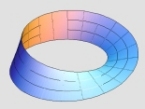Lieste
Posts: 1823
Joined: 11/1/2008
Status: offline

|
Ok, I've had a few moments to compare to data from Office of Ordnance Officers Terminal Data Vol III, Part 4, p49.
Extrapolating breach thickness of armour of the GP bomb (instant fuse, no deformation (ie blast alone)*)...
pen thickness in mm ~ 15.64 * (HE kg) ^ 0.3321
This gives HE weight similar to the 75mm being 'good' for around 14mm of RHA, with the 155mm only at 30mm, 8" How @ 37mm. It is possible that ~20% more could be expected based on 'tail fuse, instantaneous' note given in the data.
There is considerable KE/Impulse involved in short range impacts, and KE fragmentation impacts... this is probably sufficient to destroy most vehicles when looking at 6"+ weapons, but has little to do with HE effect... I remain unsure how 'strong' HE blast can be if larger bombs are less capable...
*For GP bombs the impact will cause low order deflagration, or break-up at much less than the thickness the blast will rupture, if the fuse is set to delay. SAP has lower perforation for a given HE weight, but equal perforation with intact function of delay fuse as the breach caused by instant fuse, and AP performs better in direct impacts (up to ~8" armour without deformation), but has worse blast capability per HE weight which is also lower. It can be assumed (IMO) that similar relationships will be seen for shell... as shell is relatively thicker walled than bomb, the above range of perforations may be optimistic?
Interested in your response.
|
 Printable Version
Printable Version










 New Messages
New Messages No New Messages
No New Messages Hot Topic w/ New Messages
Hot Topic w/ New Messages Hot Topic w/o New Messages
Hot Topic w/o New Messages Locked w/ New Messages
Locked w/ New Messages Locked w/o New Messages
Locked w/o New Messages Post New Thread
Post New Thread